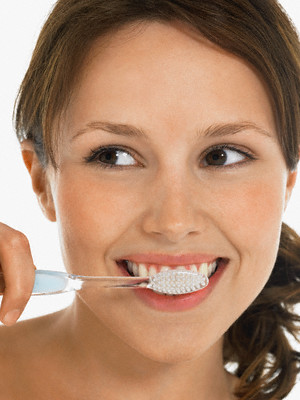 Brushing and flossing with braces is undoubtedly more difficult, it is also more important than ever. Food tends to accumulate around braces, especially near the gum line. If teeth are not cleaned and flossed regularly, cavities and/or periodontal disease may develop. After the braces are placed, instructions on how best to brush and floss will be given. However, it’s important to continue seeing your general dentist every six months. Regular cleanings will help remove any calculus you may have missed when cleaning your teeth and will help prevent issues like gum disease.
Brushing and flossing with braces is undoubtedly more difficult, it is also more important than ever. Food tends to accumulate around braces, especially near the gum line. If teeth are not cleaned and flossed regularly, cavities and/or periodontal disease may develop. After the braces are placed, instructions on how best to brush and floss will be given. However, it’s important to continue seeing your general dentist every six months. Regular cleanings will help remove any calculus you may have missed when cleaning your teeth and will help prevent issues like gum disease.
Flossing & Brushing Tips With Braces
Instructions on how to best floss and brush will be given during your appointment. Though it is more difficult to keep your mouth clean with braces, it is important to brush and floss in order to remove harmful bacteria and plaque that can lead to tooth decay and gum disease.
To floss teeth if you have braces, feed the short end of the floss through the space between the main arch wire and the upper portion of the tooth closest to the gum. Use a gentle sawing motion to work the floss on each side of the two teeth the floss is between. Be careful not to pull with too much force around the arch wire. Repeat the process throughout the entire mouth.
Begin brushing teeth by using a regular soft toothbrush. Brush down from the top and then up from the bottom on each tooth with braces. Next, brush your teeth with a proxabrush or "Christmas tree" brush. This brush is specially designed for cleaning between two braces. Insert the brush down from the top and then up from the bottom between two braces. Use several strokes in each direction before moving on to the next space between two braces. Repeat the procedure until all teeth have been cleaned.
To Read More About Brushing and Flossing, Click Here.